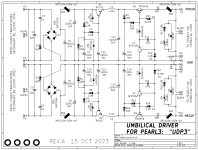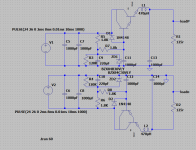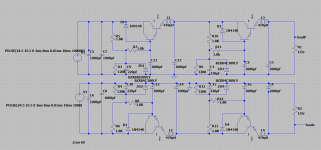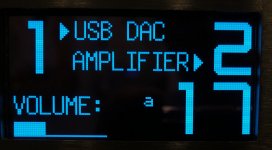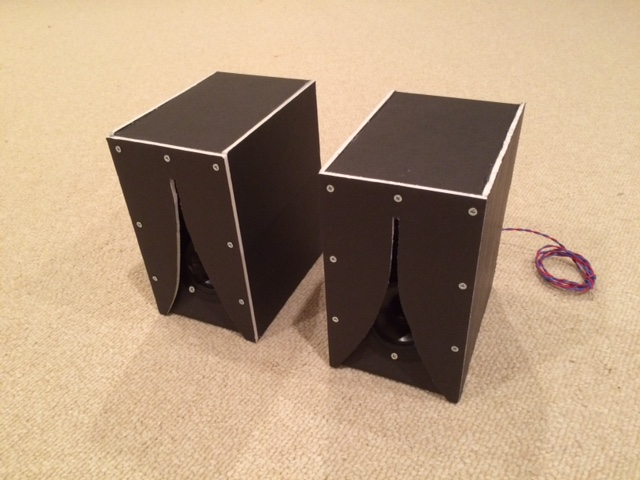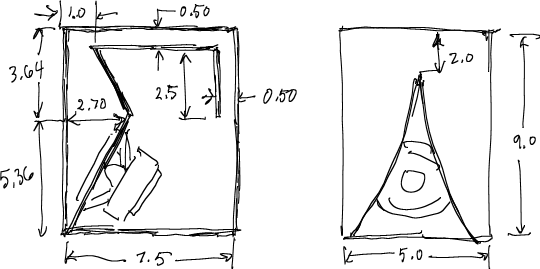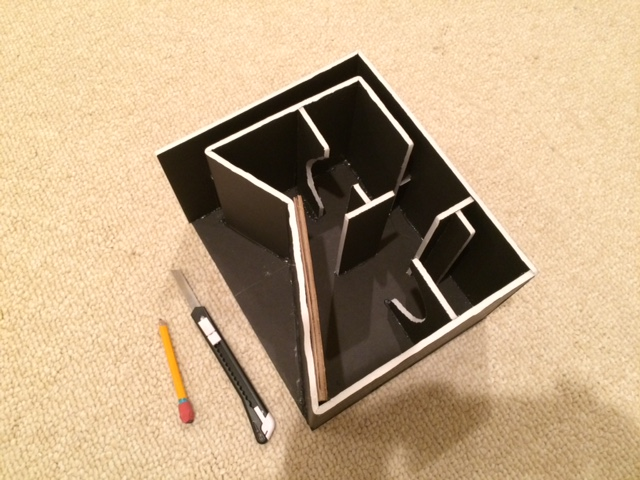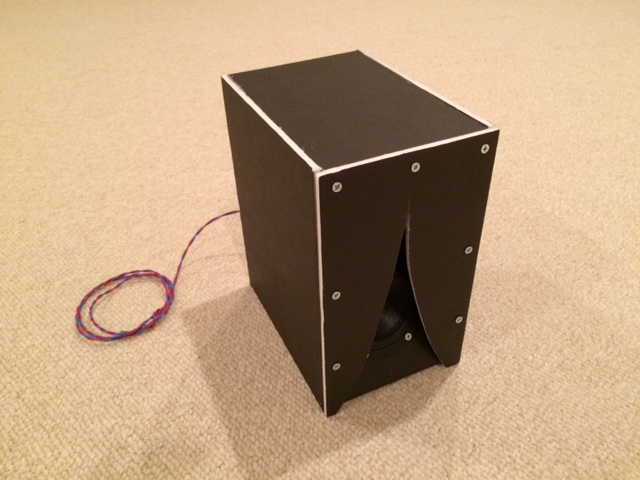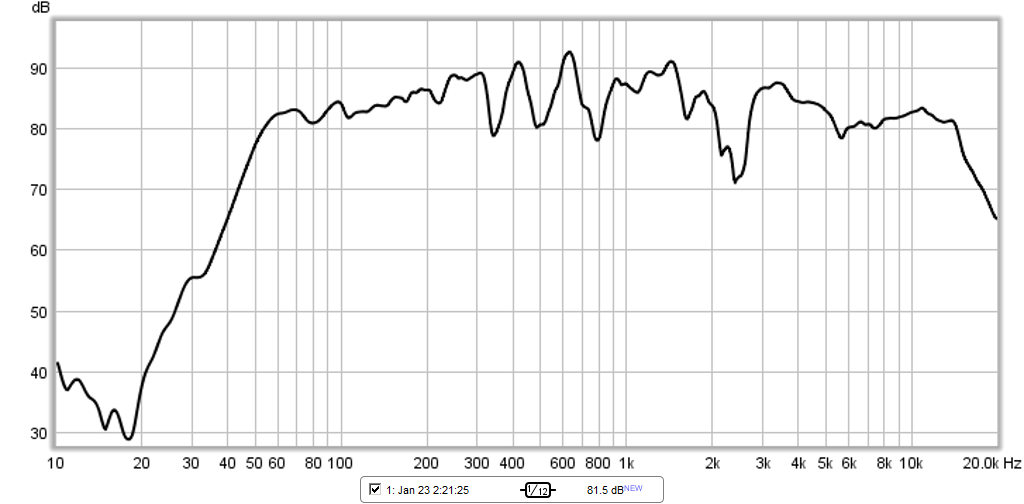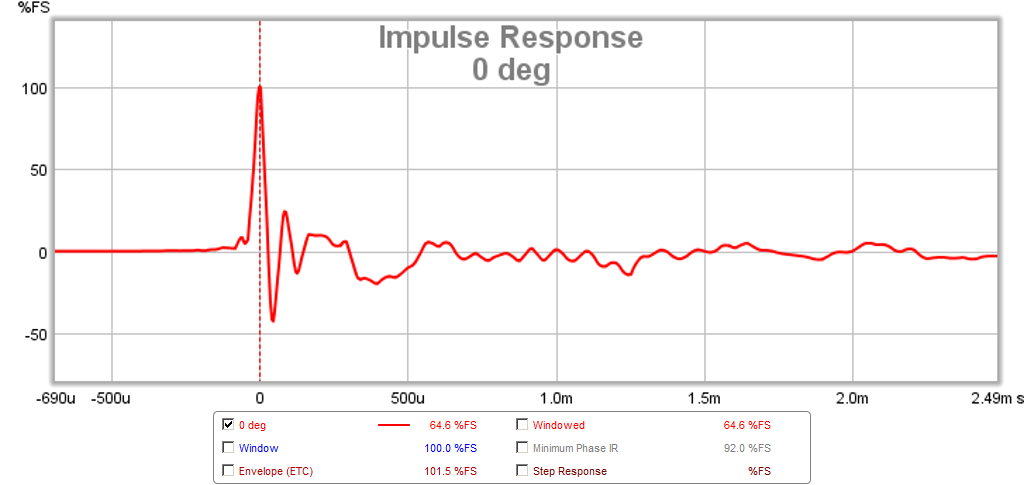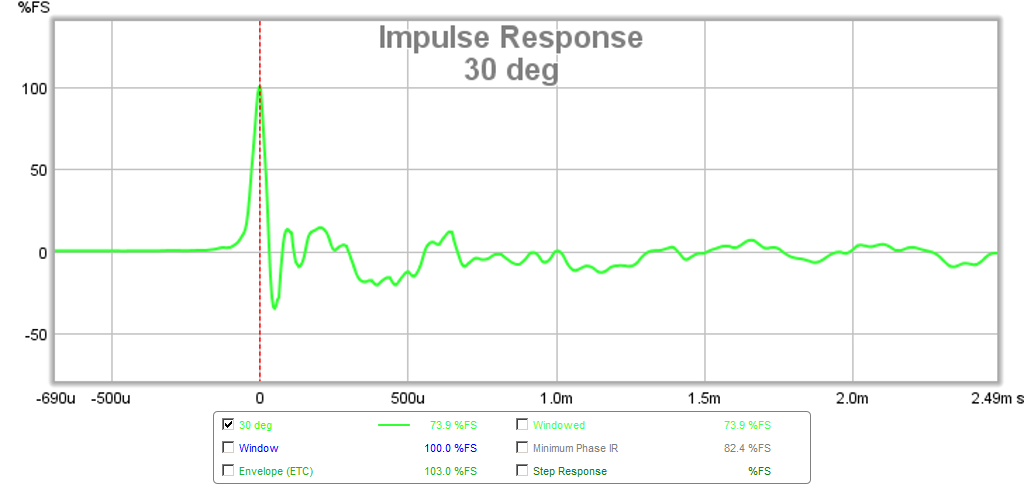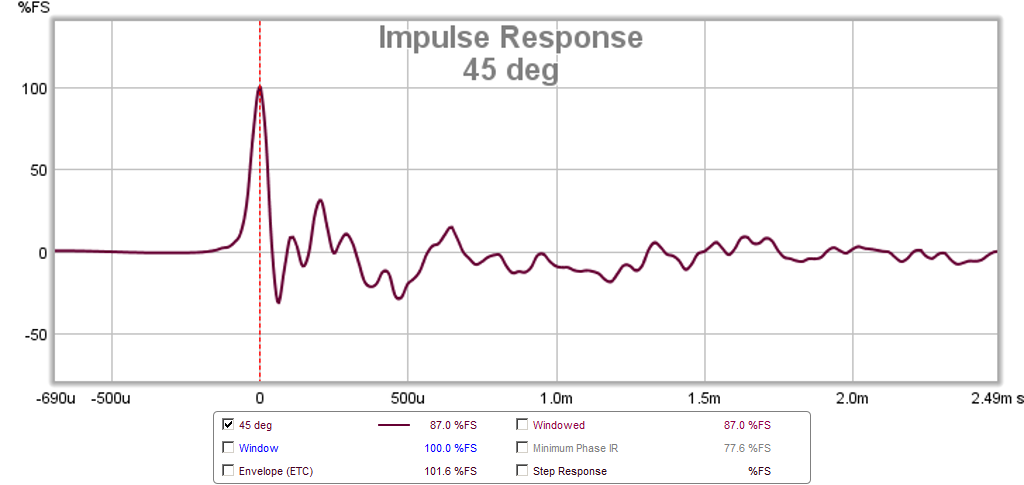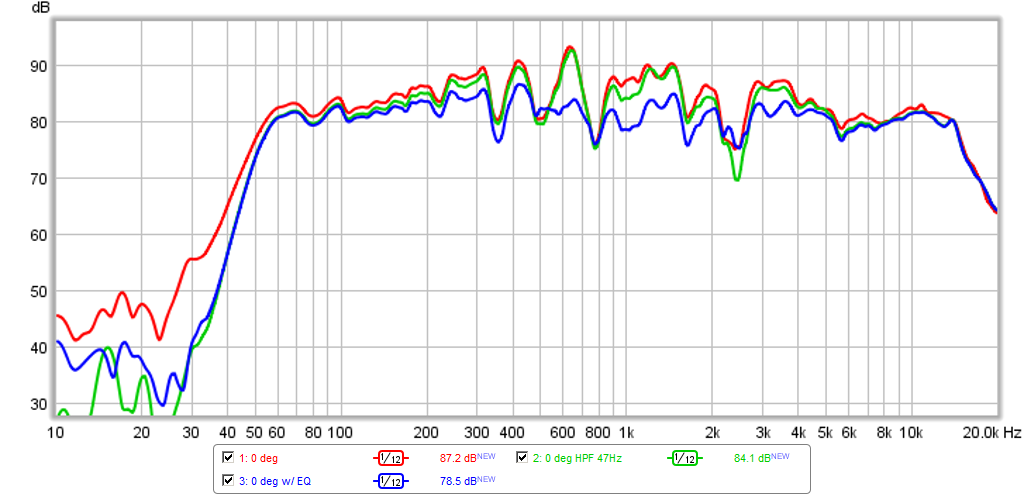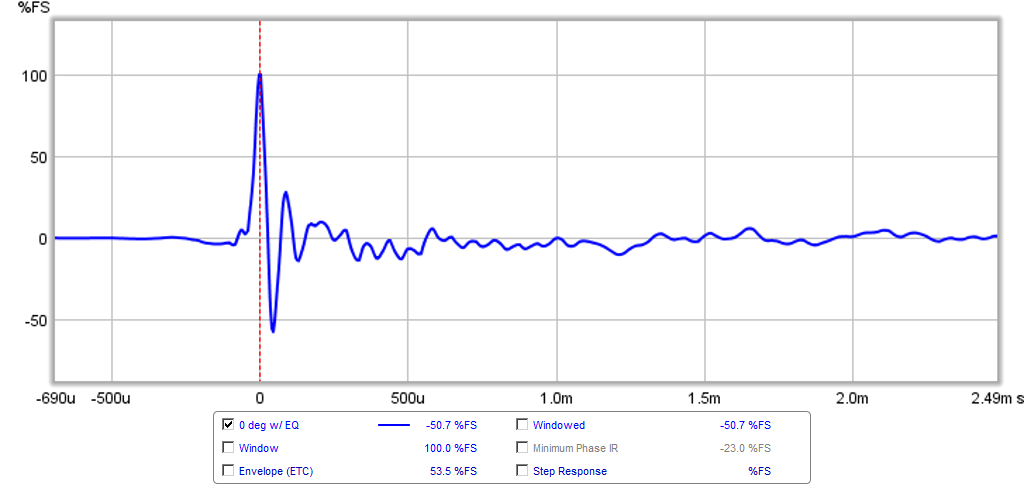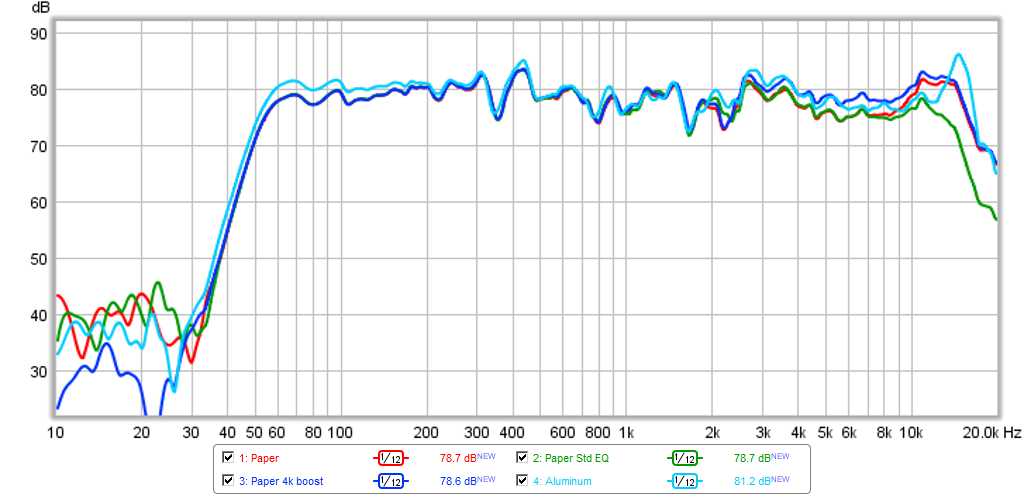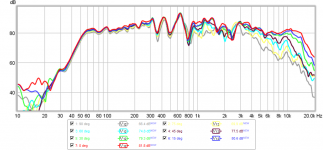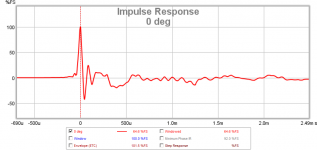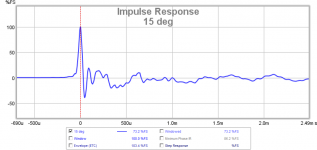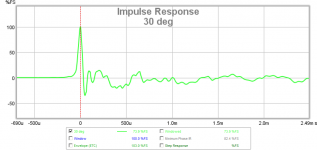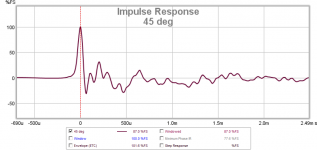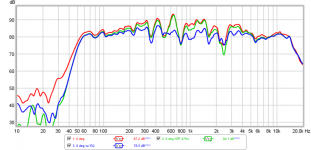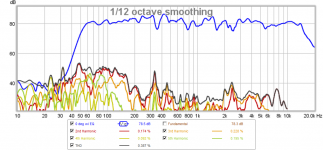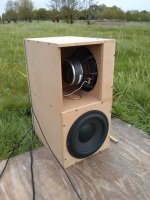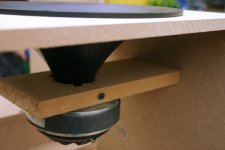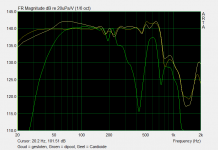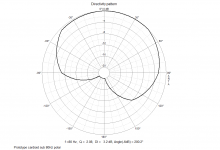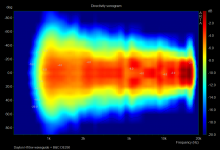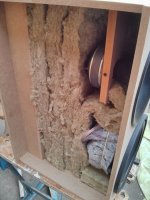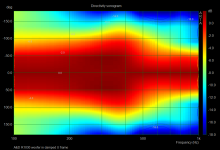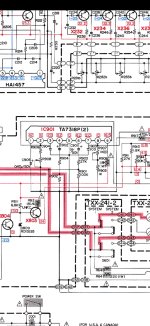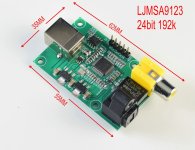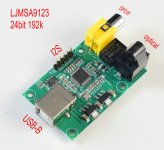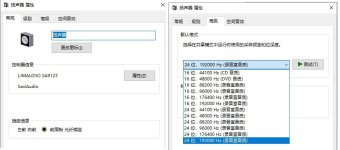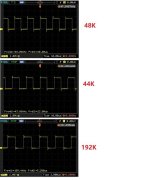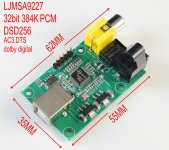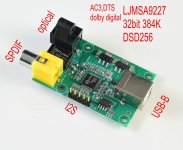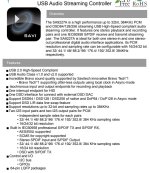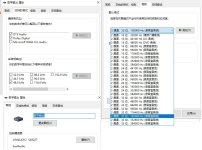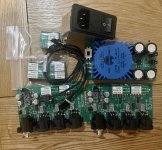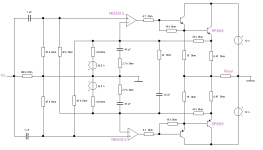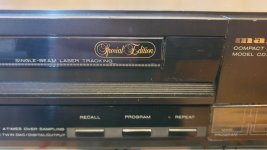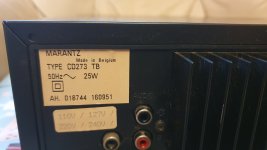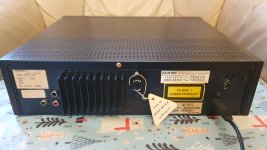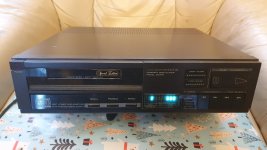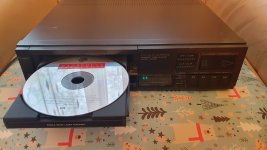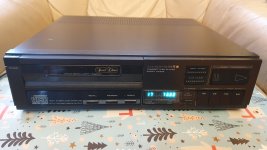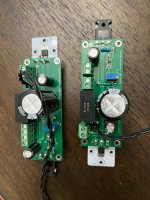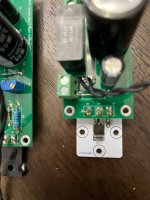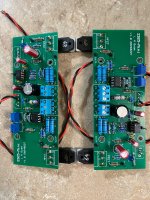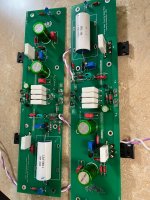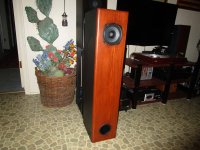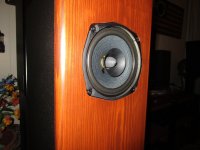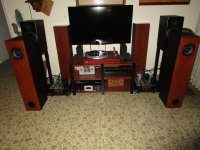Update (5/21/2020):
My Plans for XKi W5-2143 here.
Update (4/17/2019): xrk971's W5-2143 XKi (more info
here):
Videos here:
https://www.diyaudio.com/forums/ful...tio-karlson-6th-bandpass-127.html#post6689070
XKi W5-2143 basic design
here.. It is very important to follow all the instructions in previous link showing internal build details regarding use of melamine foam damping pads and felt and foamcore on the backside of the aperture.
143 here.
Update (3/23/16): Srednivashtar's wonderful dual PA130-8 XKi
What's the deal with a Karlson aperture in front of the driver? Won't that mess up the polar dispersion? That's a great question, and no. The aperture actually improves the uniformity of the polar response compared to the bare faced driver:
This thread found its beginnings here:
A Speaker that Kicks Butt in Large Spaces - Page 66 - diyAudio. The finding was interesting enough that I decided to put it on its own here.
I will recap:
Properly scaling the Karlson K15 cabinet to work with smaller drivers has been an elusive goal for over 50 years. If you are at all familiar with the K15, you know that the moment it is scaled below a 12/15 scale, the bass extension suffers. The cabinet excels at efficiently controlling cone motion and channeling what little motion there is into high SPL levels, albeit, with some warts in the way of the famous Karlson "W" dips and peaks in the mid-bass region. Nonetheless, the speaker sounds very good and has a devoted following.
I recently have been working on developing 6th order bandpass subwoofers over in the subwoofer forum, especially slot-loaded push-pull bandpass subs. This alignment is very good at controlling cone motion and in many ways reminded me of the topology of a K15. So I got to thinking that I could develop a K15 style cabinet for any size driver, if they satisfy some basic T/S parameters needed for a 6th order bandpass box (moderate to low Qts, low Vas, strong motor, high sensitivity, etc.). I would design the new box from the ground up, or as they say, "from the beginning". The "i" is for
ab initio, or from the beginning. I have figured out how to design a new type of "K" box with deep bass, good cone control, for any size driver with appropriate T/S parameters. There is no scaling of the K15 design involved, and it begins with the design of a 6th order bandpass alignment optimized for bass extension, flat response, and good control of cone motion, all properties that a 6th order bandpass alignment is known for. The difference is that the output port is simply a Karlson aperture of appropriate cross sectional area, and the chambers are designed with angles to avoid rectangular volumes that may have resonance modes.
As a test case, I designed a box that can reach 50Hz using a nominal 3.5in driver - the Dayton RS100P-4 (paper cone). This driver has a suitable moderate Qts to allow fb to set below fs and has good xmax of 4mm and a relatively powerful motor. The 6th order bandpass design was a 4.0 liter rear chamber and 1.0 liter front chamber with a 0.5in x 5.0in x 9.0in long vent, and a front chamber vent consisting of a 5in dia aperture.
I converted these volumes and vent dimensions into a box that has internal dimensions of 5in wide x 9.0in tall x 7.5in deep which then provides the correct volumes once the vent volume and driver volumes are subtracted. The front K-aperture is sized to have the same cross sectional area as a 5in dia hole, which was approximated by the area of a triangle that is 5in wide x 7in high, accounting for the curvature and offsets near the bottom.
The box design looks like this:
Here is a photo of the inside during construction showing the bracing and folded vent arrangement leading to the top of the front chamber (although not ahown, there is a piece of open cell foam on the bottom and I put a wad of pink fiberglass in the main large volume to damp the HF's from reflecting back onto the rear side of the cone):
Here is the completed speaker - still retains the look of a very small K15:
And here is the measured frequency response about 0.5m away along the axis of the driver centerline - it has the characteristic Karlson "W" dips and a falloff near the bandpass followed by the direct radiator output which lets it reach up to the HF limit of the driver (about 14kHz in this case). The measured f3 is 51Hz! An amazing concept for anyone who has ever tried to scale a K15 down will realize. Predicted max SPL at 4mm xmax is 98dB in 2pi space:
How does it sound? Very nice - sound clips attached below. Dispersion was very good as evidenced by the polar data showing very little variation in the response from 0 deg to 45 deg (or 90 deg full cone, and even out to 60 deg the variations are quite small). This is one of the biggest advantages of the Karlson aperture is a uniform polar response:
The transients are also clean as you can see from the measured impulse response. Furthermore, because the polar response is so uniform, the impulse response is also uniform along different angles. Many open face speakers will exhibit vastly different impulse responses because they have beaming or cone breakup modes that are angle dependent.
Here are the IR's for 0 deg to 45 deg (note the similarities from 0 deg to 45 deg):
This is a tiny speaker with a tiny driver, but it sounds quite big. Now, the neat thing about this methodology is that if a 3.5in driver can hit 51Hz, a 6.5in or 8in can probably do 40Hz. This can also be used for a sub woofer with a good pro audio 12in driver like the Faital Pro 12HP1030 and achieve 120dB SPL and mid 30Hz...
I applied a -24dB/oct high pass filter at 47 Hz to reduce cone excursion and some EQ to see if we can't make the response less bumpy. Here is the result of the HPF and EQ:
Here is the impulse response after the EQ has been applied - a little cleaner:
Here is the harmonic distortion - a lot of this is the result of the foam core cabinet vibrating. CLD can knock this down quite a bit but I have not done that yet:
If you are interested in this speaker and would like to design a box around your favorite driver, follow along and I will detail the process and methodology for designing the XKi for your driver.
Briefly, the process starts with a design of a quasi 6th order band pass box with your favorite driver, but with these guidelines:
1. Set the rear chamber volume to front chamber volume ratio at 4:1
2. Set the output vent to have a cross sectional area equal to at least 2x Sd if you plan on using full range drivers
3. Using a quasi 6th order bandpass simulation program (Akabak, Bassbox, etc) adjust the vent length and chamber total volume to provide the optimum balance of bass extension, SPL output, and flat response.
Akabak script for 6th order band pass is available here: XKi - X's ab initio Karlson 6th Order Bandpass - Page 16 - diyAudio
4. Convert the volumes and vent length to a box with a total volume equal to 5x the front chamber volume PLUS the driver magnet/basket/cone volume and the vent volume
5. Set the width of the cabinet based on driver bezel width plus an inch or so of margin, set the height at an aesthetically pleasing ratio (golden ratio is good), Fibonacci, etc.
6. Calculate the depth based on known volume and height and width
7. Calculate the front chamber volume using the area of a triangle - this calculates the setback of the angled V in the front chamber.
8. Make the vent a channel vent leading from the top to the back and wrapping down. Note that the final build tends to have a deeper tuning than predicted due to the additional losses in the narrow aspect vent walls, so you may want to reduce the vent length by about 15% or so in the build.
Edit Jan 25, 2015: effects of EQ, high pass filter, and aluminum vs paper cone - aluminum cone seems to have more bass.
Edit Feb 19, 2019: Plans for XKI with PA130-8 by Thermcul
xrk971's As-Built XKi for W5-2143:
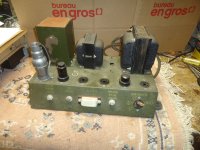
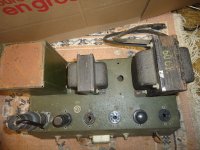
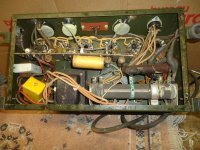
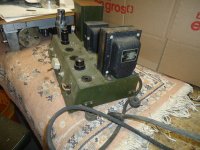
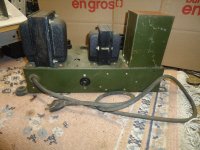
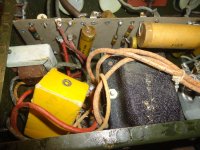
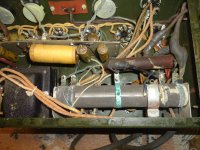
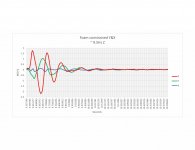
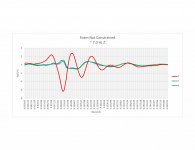

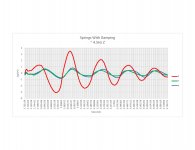
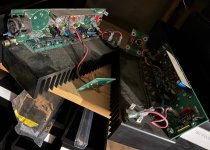
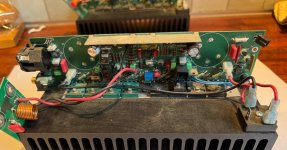

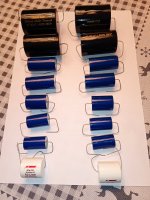
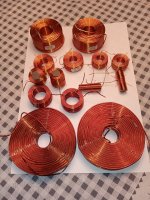
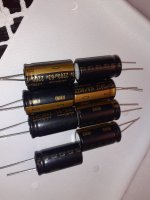
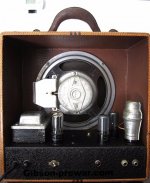
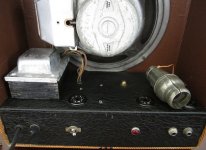
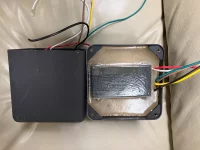
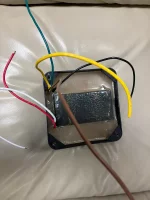
![IMG_4655[1].jpg](/community/data/attachments/1300/1300200-66e843a6707380c1edfc08398f5de42e.jpg?hash=f7ym8Jt2OM)
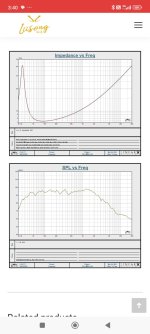
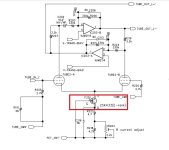
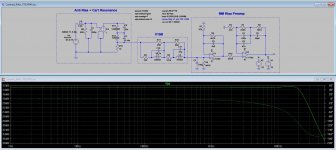
![[IMG] [IMG]](https://i.ibb.co/fYQS9wK/P1020484.jpg)
![[IMG] [IMG]](https://i.ibb.co/G08TSks/P1020489.jpg)
![[IMG] [IMG]](https://i.ibb.co/tmfdxZg/P1000222.jpg)

![[IMG] [IMG]](https://i.ibb.co/yhSdkzk/P1030220.jpg)
![[IMG] [IMG]](https://i.ibb.co/pny1PHd/s-l1600.jpg)
